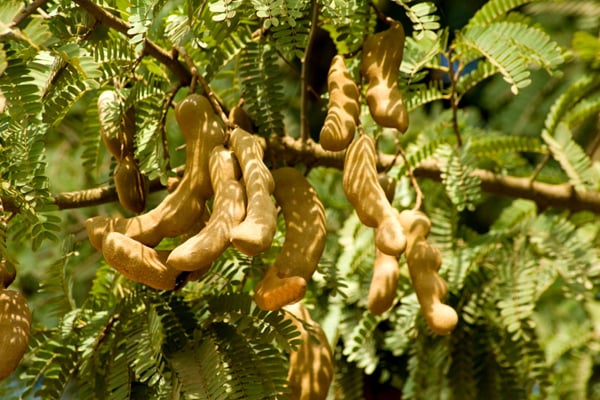Prime
Tips for planting tamarind

Tamarind tree can give fruits for 35 years continuously. Photos / Courtesy
What you need to know:
- This plant can survive or grow in any type of climatic condition. It can survive even at 0°C and above 45°C. Semi-arid tropical regions with rainfall of five centimetres to 15 centimetres are ideal for its growth. It can grow well even in heavy rainfall areas. But the land should be arranged with the proper internal drainage system.
Farmers interested to grow Tamarindus indica commonly known as tamarind can reduce by eight years the time the trees take to start bearing fruits through bud-grafting.
According to a 2016 field guide by Kenya Forestry Research Institute (KEFRI) on valuable trees, the time for a tamarind tree to reach its first harvest varies depending on the method of propagation. A tree propagated by bud-grafting will come into bearing in between three and four years, whereas trees propagated by seed may take up to 12 years.
Practical management and local conditions will also affect the time for trees to bear. A well-tended tree, grown from seed, in an open area will come into bearing in about seven years. However, regardless of the method of propagation, pod yield should stabilise after 15 years.
Production
It is highly produced in eastern and northern Uganda districts such as Lira, Gulu, Soroti, Kumi, and Oyam. Tamarind has many health benefits especially improving digestive health, heart health and is a good source of Iron and mainly helps in managing diabetes.
Climatic conditions
This plant can survive or grow in any type of climatic condition. It can survive even at 0°C and above 45°C. Semi-arid tropical regions with rainfall of five centimetres to 15 centimetres are ideal for its growth. It can grow well even in heavy rainfall areas. But the land should be arranged with the proper internal drainage system.
Soil requirement
The best thing we can observe in the tamarind plantation is it can be grown well in poor soils also. Deep loam and alluvial soils are ideal for its growth and best yield. Tamarind can be cultivated in the soil with pH ranging from 4.5 to 9.0.
Planting methods
Tamarind can be propagated through seeds, grafts, and buddings. Seeds take nearly one week to 10 days to germinate. These seedlings are allowed to grow up to between three and four months and then transplanted to the main field. In recent times, softwood grafting is very successful and gave the best yield.

Tamarind seedlings
The ideal time for planting the Tamarind plantation is from June to November. Pits are prepared with 1x1x1 and are maintained at a distance of 10 metres x10 metres. Between 15 and 20 kilogrammes of fertiliser is added to each it along with the topsoil. Irrigate the planted seedlings from time to time to establish the plants in the field.
Manures and fertilisers
The fully decomposed cow dung or any organic manure yields better results than any other chemical fertiliser. This is added to the soil after forming the pits.
How to carry out irrigation
Young tamarind plants require frequent irrigation during the dry season, in the rainy season it doesn’t require any water. Care should be taken to drain off the water stagnation. The beginning stage of the plantation requires water in a steady state. The excess water should be removed during this stage.
How to control weeds
This can be achieved by ploughing field more than thrice to attain fine tilth in the soil during this the weeds are ploughed and are separated at the end. Mulching is also done, which helps to control the growth of weeds and also helps to retain the soil moisture content.
Yield
A young tree may yield between 20 and 30 kilogrammes of fruit per tree in a year and a full-grown adult tree can yield about 150 and 200 kilogrammes of fruit per tree in a year. An average tamarind tree may yield 100 kilogrammes of fruit per tree in a year.
How and when to harvest
Tamarind fruits are harvested either in the raw state which is used in pickles and consumed raw due to their sour taste these also have good market value.
The other one is completely ripening which gives sweet and sour taste this has high demand in local and international markets as it can be transported as a paste to other countries.
Not only fruits the tender leaves and the seeds along with the wood also have high demand in the markets as these plant products are used for multipurpose.
Harvesting can be done by handpicking or beating with a stick is into practice till now. If the plants are grown by using seeds then the yield starts in the eighth year; if they are developed through grafts then the yield can be seen from the fourth year onwards.




